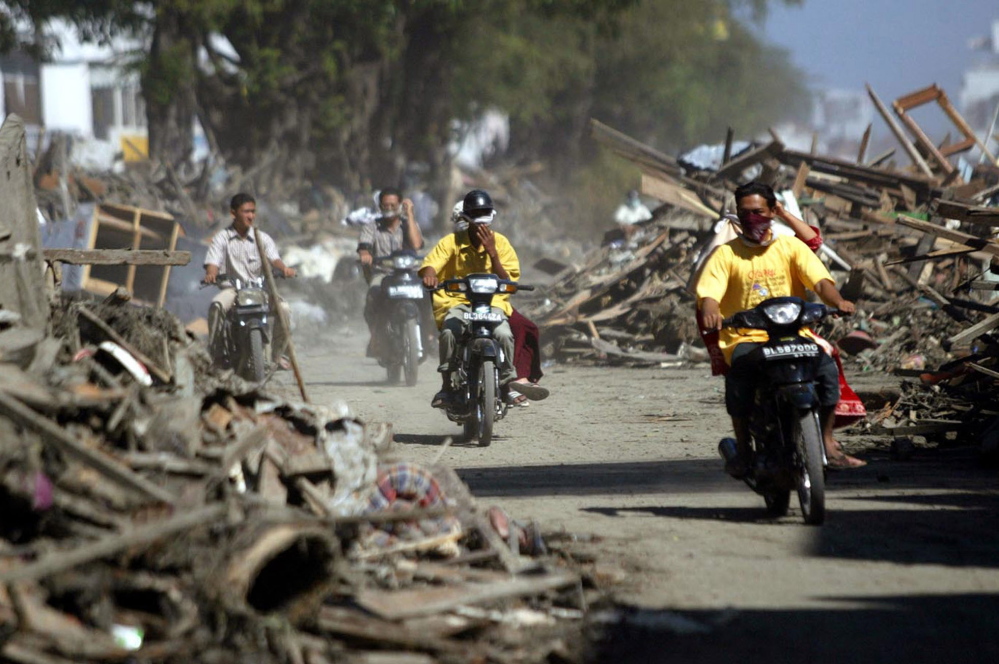BANDA ACEH, Indonesia — Cars. Fishing boats. Houses. Entire villages. The 2004 tsunami left Banda Aceh with mountains of debris up to 4 miles inland.
Driving in the remade communities today, it’s easy to wonder where it all went. Some of it is still there – recycled into road materials, buildings and furniture. Some of it was burned, creating new environmental hazards. And most of it was simply washed out to sea.
Ten years after that gigantic wave engulfed this city of 4 million on the northern tip of Indonesia’s Sumatra island on the day after Christmas, Banda Aceh has been almost totally restored. The tangled mountains of rubbish are gone, and it’s hard to imagine the destruction that once choked rivers, blocked streets and ripped up trees by the roots.
The endless heaps of twisted metal, splintered wood and broken concrete have all disappeared except for some scattered reminders for tourists and local residents. A drive along the coast highlights a stunning coastline with new houses perched near the beach. Lush mangroves have been planted to help withstand future tsunamis, fishermen are back at sea and farmers are again working their rice paddies.
Still, authorities are concerned about the health and environmental risks posed by debris contaminated by oil, asbestos and medical waste sitting on the seafloor off the coast and in 32 unregulated dump sites around the city.
“Unsafe disposal of waste will cause further environmental damage in the long term,” said Kuntoro Mangkusubroto, who headed the Aceh and Nias Reconstruction and Rehabilitation Agency, which led the massive clean-up effort and was dissolved in 2009 after the job was judged finished.
Banda Aceh was the hardest hit city, which devastated hundreds of communities in more than a dozen countries.
The tsunami left an estimated 13 million cubic yards of debris here, most of it washed into the ocean, Mangkusubroto said. If all that was squeezed into a 2 1/2 acre field, it would create a tower of trash 3,000 feet tall.
Cleaning up the wrecked city was a mammoth, often overwhelming, task.
For weeks, the streets were strewn with rubble, and rescue workers retrieved dead bodies from under houses and in ponds, said Abdul Mutalib Ahmad, who worked at Banda Aceh’s only landfill.
“Debris was everywhere,” he said. “We thought we were facing severe public health problems with the massive amount of waste.”
At first, many survivors simply burned wood and other garbage. But authorities discouraged them from doing that because it polluted the air and could expose them to harmful toxins.
Send questions/comments to the editors.



Success. Please wait for the page to reload. If the page does not reload within 5 seconds, please refresh the page.
Enter your email and password to access comments.
Hi, to comment on stories you must . This profile is in addition to your subscription and website login.
Already have a commenting profile? .
Invalid username/password.
Please check your email to confirm and complete your registration.
Only subscribers are eligible to post comments. Please subscribe or login first for digital access. Here’s why.
Use the form below to reset your password. When you've submitted your account email, we will send an email with a reset code.